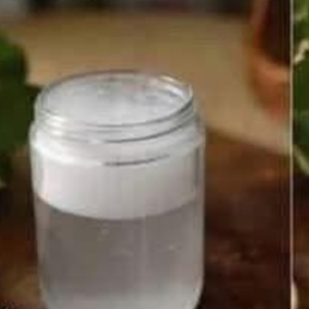Here’s a comprehensive recipe profile for your 12 Natural Homemade Cleaner Recipes, broken into the requested detailed sections:
Introduction
In today’s world of health-conscious living and environmental mindfulness, homemade natural cleaners are making a powerful comeback. They offer an affordable, sustainable, and toxin-free alternative to commercial products packed with harsh chemicals. With just a few pantry staples and essential oils, you can create effective cleaning solutions for every part of your home—from kitchen counters to bathroom tiles. This collection of 12 DIY natural cleaner recipes empowers you to care for your home while prioritizing your health and the planet.
Origin and Cultural Significance
Natural cleaning methods are not new; they are rooted in centuries of traditional homemaking practices across cultures. Long before synthetic cleaners existed, people relied on ingredients like vinegar, baking soda, lemon juice, and plant oils to clean, disinfect, and deodorize their homes. The resurgence of these methods reflects a cultural shift toward wellness, sustainability, and transparency in household products. Movements like zero-waste living and clean-label consumption have brought these humble ingredients back into the spotlight, bridging ancestral wisdom with modern eco-conscious living.
Ingredients & Quantities
(Each recipe has its own ingredients; here’s a summarized list of frequently used items.)
Common Core Ingredients:
- White vinegar
- Baking soda
- Rubbing alcohol
- Hydrogen peroxide
- Castile soap (liquid)
- Natural dish soap (e.g., soapberry-based)
- Essential oils (lemon, tea tree, lavender, clove)
- Cornstarch
- Water (filtered or boiled)
- Super washing soda
- Citric acid
- Salt
Optional Additions
- Herbal-infused oils (e.g., rosemary, eucalyptus)
- Citrus peels (infused in vinegar for fragrance)
- Borax (for tougher stains or mildew—use with caution)
- Activated charcoal (for deodorizing blends)
- Vegetable glycerin (to help preserve moisture balance in solutions)
Tips for Success
- Label each bottle clearly with name and date of creation.
- Shake spray bottles before use to re-emulsify ingredients.
- Use glass bottles for acidic mixtures (vinegar + oils) to prevent plastic degradation.
- Patch-test on surfaces before full application to avoid damage (especially on natural stone or hardwood).
- Store in a cool, dry place away from direct sunlight to maintain potency.
- Keep essential oil-based cleaners out of reach of pets—some oils may be toxic to animals.
- Use distilled or filtered water for longer shelf life.
Instructions
1. Floor Cleaner: Mix ingredients in a bucket, dip and wring mop, use 1–2 times/week. (Avoid on hardwood.)
2. Mold/Mildew Cleaner: Mix vinegar + tea tree oil; spray and let sit 24 hrs. For paste: scrub with a baking soda mix.
3. Multi-purpose Cleaner: Mix in a spray bottle; use on most surfaces (except glass).
4. Sink Cleaner: Combine ingredients, store dry, sprinkle and scrub as needed.
5. Laundry Detergent: Mix and boil ingredients, add cold water, store and use ¼ cup per load.
6. Kitchen Cleaner: Combine and scrub kitchen surfaces, then wipe with a damp cloth.
7. Dishwasher Pods & Rinse Aid: Mix to “wet sand” texture, mold, dry, and store. Use vinegar or citric acid as rinse aid.
8. Tile/Grout Cleaner: Apply baking soda/hydrogen peroxide paste or spray alternative, let sit, scrub, and rinse.
9. Disinfectant Spray: Mix in bottle, spray surfaces, let sit 10 mins, then wipe.
10. Glass Cleaner: Shake well before each use, spray on glass, wipe with microfiber, air dry.
11. Degreaser: Mix ingredients in bottle, spray on greasy areas, wipe clean.
12. Toilet Cleaner: For pods, mix and mold; for liquid, blend and store. Use hydrogen peroxide for seat disinfection.
Description
These 12 natural homemade cleaner recipes cover virtually every corner of the home—from bathroom grime to kitchen grease, from laundry freshness to glass sparkle. Crafted with familiar ingredients, they offer a satisfying DIY alternative that’s both cost-effective and environmentally gentle. The essential oils add natural fragrance and antiseptic power, while ingredients like vinegar, baking soda, and castile soap handle the dirty work naturally and safely.
Nutritional Information
N/A – As these are not food products, there are no nutritional values. However, safety is worth noting:
- Skin contact: Some essential oils can irritate sensitive skin—use gloves.
- Inhalation: Always ventilate when using vinegar- or alcohol-based sprays.
- Storage: Keep all cleaners away from children and pets unless specifically marked as safe.
Conclusion
These homemade cleaner recipes bring back control, transparency, and sustainability into your cleaning routine. By investing a little time in crafting your own solutions, you reduce exposure to chemicals, minimize waste, and create a safer home environment. They’re practical, empowering, and align beautifully with a low-tox lifestyle.
Recommendation
- Start with 2–3 core recipes (multi-purpose, glass, and floor cleaners) to ease into the routine.
- Gradually expand into specialty cleaners as you gain confidence.
- Consider repurposing old containers or buying reusable amber glass bottles for long-term use.
- Make it a family activity—label bottles with fun tags or teach kids about safe cleaning.
Embracing Healthful Indulgence
Healthful indulgence isn’t just about what we eat—it’s how we care for our spaces. Creating your own cleaning products is an act of self-care and environmental kindness. It’s about choosing safety, simplicity, and peace of mind over synthetic convenience. These recipes let you indulge in a cleaner, greener home while staying connected to nature and tradition. Let your clean spaces reflect your clean conscience.
Would you like this formatted into a downloadable or printable guide?

